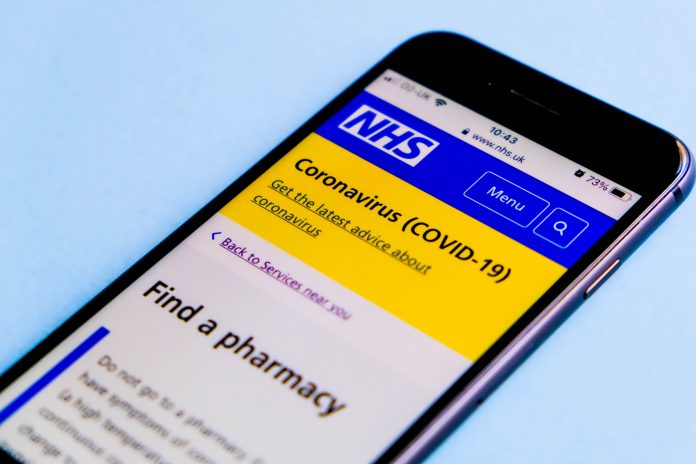Zillah Moore, Director at Tunstall Healthcare, discusses the role of technology-enabled care services and remote patient monitoring in reducing delayed discharge from hospitals and providing much-needed assistance to the NHS
The COVID-19 pandemic has placed a spotlight on the services provided by the NHS and the challenges that it faces on a daily basis. When deployed correctly, digital health and care solutions can provide much-needed support for the NHS and other care providers. It enables health monitoring and support to be delivered remotely which can reduce the risk of infection, give opportunities for families and communities to become more involved in offering support and enable care to become more person-centred and preventative.
Technology connects people, enables integrated care provision, and empowers people to manage their own health and wellbeing. The COVID-19 pandemic in particular has starkly illustrated the value of technology-enabled care services (TECS). We are at a turning point in the history of healthcare, and the lessons learned during the pandemic must play a crucial role in the remodelling of our health and care services in a post-COVID world.
The impact of COVID-19
With 23,341 hospital beds currently taken up by COVID-19 patients receiving treatment(1), this has led to the NHS to not only struggle to give the right care to victims of the pandemic, but to continue providing support and treatment for people with existing or new health conditions.
The NHS has also experienced ambulance services becoming overwhelmed as increasing numbers of people require emergency responses. In some areas, patients have waited up to nine hours for an ambulance, particularly for category three and four calls.
Delayed transfers of care isn’t a new challenge, Although the pandemic has led to an increase in delays, it has provided a new opportunity to do things differently and make use of telecare and telehealth to expedite hospital discharge.
When a patient no longer needs care in hospital, delaying discharge can negatively impact their recovery, whilst also increasing their risk of hospital-acquired infections. In fact, pre-COVID, 5% of NHS England hospital beds were occupied by patients awaiting discharge with the majority in acute care. This has been critical during the pandemic where an increasing number of beds have been required to provide care to people infected with COVID-19.
COVID has broken down many barriers to technology adoption, and we must ensure the gains made aren’t lost. NHS Trusts, CCGs, and local councils are recognising that technology can offer remarkable benefits through wider and more effective investment and deployment.
The pandemic required rapid collaborative action to ensure quality care could be delivered to those with ongoing care needs, alongside the burgeoning number of COVID patients. New teams were built, technology adopted, new working cultures developed, and new approaches to solving difficult challenges implemented. All very quickly.
Technological initiatives which would previously have taken months to become operational have been established and mobilised in weeks. Solutions implemented during COVID-19 have benefitted a range of cohorts, including people living with mental health conditions, care home residents, and people living with long term health conditions.
TECS and remote patient monitoring (RPM) can support the NHS and other service providers in releasing hospital bottlenecks and removing obstacles to fast and efficient hospital discharge. Digital solutions can be deployed at home, and provide reassurance to patients and their loved ones that risks can be reduced, and clinical monitoring and recovery management is possible outside of a hospital setting. They can also be deployed to prevent hospital admission/readmission.
Preventing hospital admissions
Digital health solutions such as RPM not only encourage users to actively monitor their own health and wellbeing but provide numerous opportunities for clinicians and carers to stabilise people both at home or in a residential care setting. Likewise, remote monitoring of vital signs and symptoms can give an early indication of deteriorating health, and clinicians can view data via an online portal to identify patients most in need of intervention.
TECS or telecare systems can be tailored to the needs of every user, helping to automatically monitor risks, such as falls or fires, and giving vulnerable people the ability to call for help in case of an emergency, 24 hours a day, from a range of stakeholders.
Proactive calling from specialist monitoring centres can signpost to other services, for example, falls prevention and mental health support when a potential issue or emergency is detected. This enables early intervention to avoid hospital admissions, manages risks, and improves outcomes.
TECS also enable sophisticated remote monitoring and proactive care planning, ensuring care is provided when it is needed most. Discrete monitoring of activity over time, such as how often the kitchen and bathroom are being used, can detect any deterioration in wellbeing at an early stage and enable interventions which can reduce or delay the need for more complex care.
Preparing for future crises
TECS and RPM can not only support the NHS during a pandemic but also provide a robust platform for future health and care delivery. Digital solutions connect people to clinicians and their communities to enable more proactive and preventative care, and ensure a resilient network is already in place should we ever face such a crisis again.
Progress in technology will benefit a huge number of people and support improved hospital discharge times, reduced bed blocking, and more efficient ambulance services. As we live longer, demands on public services will increase and investment in TECS is crucial to ensure the NHS can continue to deliver effective care, even if we face another global health crisis.
Sources











